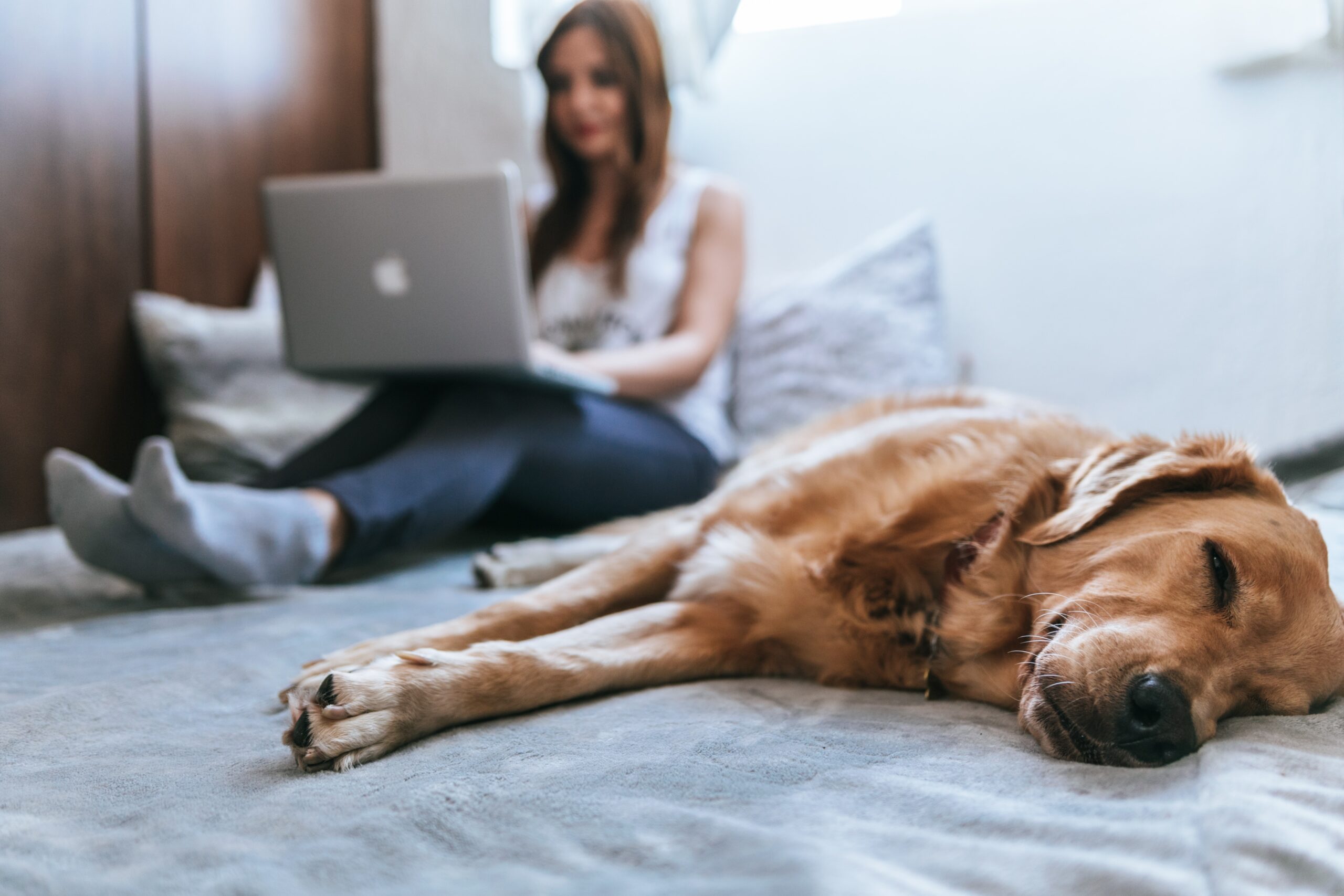No one said training and caring for dogs is easy. Finding the balance between wanting them to feel loved and wanting them to behave is a challenge most owners struggle with at some point.
It’s up to you to make sure your canine companion is happy, healthy and safe. And that comes with a lot of responsibility.
Over the years we have seen a lot of the same mistakes being repeatedly made without negative intent. Continue reading to see if you’re guilty of any these.
Feeding them too many treats
Giving your dog a well-earned treat is one of the few displays of affection they always value.
Treats can reinforce and nurture the bond between you and your pet, and are particularly useful in puppy training to reward good behaviour.
But relying too heavily on treats to encourage desirable behaviour can limit what your dog responds to in the future. They may only see obedience as a way of getting food, which will therefore lessen the impact of any command or ritual you’re trying to instruct.
Not only this, but the tastiest treats tend to be unhealthiest. Dog treats should make up no more than around 10% of your pet’s total calorie intake, so it’s important not to overfeed your dog to maintain a balanced diet.
Keeping your dog in a hot car
After all the hot weather we’ve been experiencing recently, and are set to in the upcoming months, this is a mistake all dog owners must avoid making.
Temperature inside a car rises much quicker than it does outside, and even just a few minutes can be fatal for your pooch if it’s a sunny day.
Regardless of whether your car is parked in the shade or the windows are down, dogs can still quickly become dehydrated, develop heatstroke or even die in some cases.
Not punishing your dog immediately
If your dog misbehaves, act fast and address it on the spot. But there are exceptions to this.
What is instant to you may not be instant to your pup. So, if you come home and your dog has had an accident, they will have already performed multiple behaviours since it happened. Punishing them hours later will only confuse them, as they won’t associate the telling off with their early misbehaviour.
Instead, they could associate your anger with something completely different, such as your arrival home.
Guessing your dog’s favourite rewards
Good behaviour needs to be rewarded frequently throughout training so they understand how to behave at home and in public.
But like humans, dogs have preferences on how they like to be rewarded. Whilst some prefer treats, another dog’s ideal reward could be taking the ball-thrower to the park.
Understanding your pet’s favourite incentives will help with reinforcement purposes.
Using harsh cleaning products
Keeping your area clean when you have a dog is essential for the hygiene of your home and pet.
Though some cleaning products, such as bleach and ammonia, are hazardous for dogs. When walking on wet floor, they can absorb the toxins through their paws and even inhale chemical fumes if they lick their paw pads.
Our Clean ‘n’ Safe for Cats & Dogs works as a safe disinfectant, cleaner and deodorant in areas where pets live, sleep and feed.
Travelling with your pet without a seatbelt
Dogs need to wear seatbelts for the exact same reasons we do.
Also, Rule 57 of the Highway Code states: “When in a vehicle make sure dogs or other animals are suitably restrained so they cannot distract you while you are driving or injure you, or themselves, if you stop quickly. A seat belt harness, pet carrier, dog cage or dog guard are ways of restraining animals in cars.”
Forcing your dog to make friends off-lead
Encouraging your dog to socialise with others can be a great way for them to make friends and build confidence outdoors.
But lots of dogs also find this sort of situation very stressful. If your pet is one of them, it’s best to introduce him or her to other dogs on the lead and let their reaction determine next steps. When your dog is displaying feelings of anxiety and nerves, the safety of the lead will help them feel more comfortable.
Thinking your dog chewing your shoe is naughty
If your dog runs away with your shoe, don’t always regard it as mischievous or ‘bad’ behaviour.
In fact, it’s quite the opposite. It’s usually a sign of separation anxiety and has nothing to do with revenge. They often look for things to chew on to relieve stress, and shoes happen to be on ground level.
To limit the risks of your dog ruining another pair of shoes, use our Anti-Chew Spray which helps deter destructive chewing through a bitter taste harmless to pets.
Feeding your dog at the dinner table
Even if your pup is whimpering by your side, try not to feed them off your plate. It creates bad habits and you risk feeding your dog something they shouldn’t be eating.
Many human foods contain an unhealthy amount of sodium for dogs which can cause rapid dehydration and muscle cramps/stiffness.
Overfeeding your dog
When you use food to encourage positive doggy behaviours, it can end up having a negative effect on their health.
There are plenty of other ways to show your pet lots of love and affection that don’t contribute to excessive weight gain.
Taking them to the park or playing fetch are two simple ways you can reward your pet through exercise and steer clear of overfeeding.
Lecturing your dog
Lecturing your dog on what’s right and wrong isn’t the most effective approach to getting them to behave. Whilst some breeds can be smart, most dogs don’t understand or interpret large amounts of information the same way we do.
Simple cues, either good or bad, that are used on the spot tend to generate the best response. Dogs can understand what you’re trying to say through your tone of voice and body language, not lecturing.
Keeping your dog on the lead permanently
Daily walks are very important for the general exercise and activity of your dog. But sticking to the same straight road or path doesn’t allow them to act upon their inhibitions.
Letting them run off-lead (whenever it is safe to do so) ensures they get enough vigorous exercise and self-entertainment to tire them out for the day.
An added bonus is that you don’t have to do much work besides keeping a close eye and using well-rehearsed call backs when necessary.
Not microchipping your puppy
A microchip could save your pet’s life. It gives your pet the best chance of being identified and returned to you if they get lost or stolen.
While name tags and collars can get caught or taken off, microchipping identifies your pet permanently and effectively through a unique code under their skin.
Not registering the microchip
The whole procedure is worthless unless you make sure the microchip is fully registered. Without this, no details of the owner will be displayed when the chip is scanned.
And make sure it’s registered correctly. There are several databases depending on where you live so it’s important the right one links to your pet’s chip.
Comforting your dog when they whimper
Naturally, our first instinct is to console our pets when they’re crying. Though we understand it’s not nice to see them upset, you must put on a brave face and ignore the whining to make them successfully stop.
Otherwise, they might interpret this as a reward associated with being scared or use whimpering as a way to receive affection.
Our Calming Collar for Dogs helps calm and soothe nervous and hyperactive dogs, before the whimpering begins.
Overestimating your dog’s intelligence
Despite how intelligent your pet may seem; they are still animals that require human care and supervision.
According to several behavioural measures, dogs’ mental abilities are close to a human child aged 2 to 2.5 years. It goes without saying that children this young need intense looking after, and the same goes for your pet.
Demanding your dog stops barking
Raising your voice in an attempt to stop your dog barking often has the opposite effect.
Dogs read human messages through body language and tone of voice. So, if you’re constantly shouting at them, they may misinterpret this as you joining in and bark even louder.
If you simply ignore or speak to them in a calm yet firm voice, they should eventually stop.
Not giving puppy training a chance
Puppy training can be a longwinded process that requires a lot of patience and contribution from all household members. A lot of new pet owners especially struggle with this but stick at it because your pooch will get there if their trainers are dedicated enough.
Being consistent with the cues and commands you use will make it much easier for your dog to learn what you’re asking them to do.
Our Puppy Trainer Pump Spray can offer a helping hand when house training your pup.
Showing your dog their poop or pee
It’s unlikely that your pet will make the connection that their chosen toilet spot was wrong. It will only make them feel anxious and teach them to fear you.
When they’re puppies, it’s not instinct for them to relieve themselves outside. They only know not to ‘go’ where they sleep, so if they have an accident, be patient and know that it’s not intentional.
To stop dog waste ruining your carpet or flooring, use our leak-proof House-Training Pads to absorb moisture and odours.
Not putting your dog in your Will
Just like any other property you own; pets are seen as property under the law and part of your estate. That’s why it’s important to think about what happens to your beloved pet after you’re gone.
Including your dog in your Will ensures the designated person of your choice will protect and carry out your wishes regarding your cherished animal family member.
Reinforcing negative behaviour
When your pet gets attention from bad behaviour, it encourages them to repeat these actions.
Even though some situations can be humorous, it’s important to hold back the laughter and refrain from petting your dog. If not, they will assume they’ve done nothing wrong.
Making lead-training a bad thing
Dogs need to be lead-trained for their own safety. Walking next to busy roads or in unfamiliar surroundings calls for the lead to stop them running in front of cars or getting lost.
Just because it can be challenging doesn’t mean it’s a punishment. Granted, they may be slightly more restricted than if they were off lead, but dogs can still easily enjoy and adapt to walking this way.
Using dental snacks in replacement of teeth brushing
Dental snacks are no substitute for brushing. They should be used in combination with regular dental cleanings.
These chews might help keep plaque and tartar buildup at bay, but they aren’t actually doing much by way of teeth cleaning. Our Toothbrush is great at helping to promote and maintain good dental health.
Also, if you are going to feed chews to your dog, check the ingredients and calories per stick – you don’t want to deal with a weight problem while trying to reduce dental issues.
Giving your dog a toy when they chews your shoes
This is a prime example of reinforcing bad behaviour and what not to do.
Giving your dog a toy or a bone to distract them is only going to increase the chances of them repeating this behaviour because you’re not treating the cause.
Neglecting daily walks
Most dogs’ favourite part of the day is their daily walk. It is one of their only chances in the day to roam free and explore surroundings beyond the back garden.
When we are busy or tired, many of us are guilty of cutting these walks short or neglecting them completely. But next time you’re tempted, remember your pet has been cooped up inside all day waiting for you to take them out.
Leaving it all to your dog’s groomer
The occasional trip to the groomer’s isn’t going to keep your dogs’ hygiene on top form.
You need to make a conscious effort to brush their fur, bathe them and ensure they’re well-kept in between visits as well. For a fresh, clean and bright coat, grab our Groom Conditioning Spray.
If you don’t look after your pet, this is where they become particularly susceptible to fleas, worms and other types of disease.
Not researching your dog sitter
Any busy pet parents in need of a dog sitter, make sure you do your research beforehand. Check their credentials and get references from other clients where possible.
It’s one thing watching someone’s pet for the evening, but it takes someone educated to make a good dog sitter. They should know about the general and specific physical and nutritional needs of your dog, as well as the animal resources in your local community if emergency strikes.
Assuming all your pets will get along immediately
When you introduce a new pet to the family, it changes the dynamic. This can be a lot for existing animals to process, especially if they’re used to being the only pet in the house.
The first meeting is best to take place outside and on a lead for safety purposes. Remember to reinforce any good behaviour with their favourite rewards and analyse interactions from there. This could go better or worse than you had initially planned, so ensuring the environment is controlled is some of the best preparation.
Leaving flowers in your dog’s reach
Many plants and flowers, such as Lilies and Daffodils, are poisonous to dogs.
But our inquisitive pets aren’t aware of this. If they see flowers in touching distance, there’s a good chance they will eat them (whether they’re hazardous or not!).
That’s why it’s best to place your vase out of reach of greedy pups.




